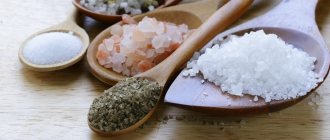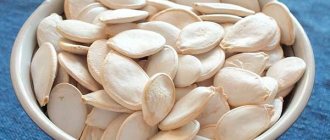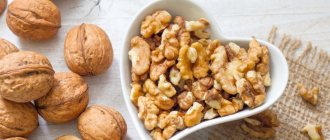Chicory gained particular popularity in Europe in the 18th century, when in Germany the gardener Tamme from Thuringia first made a drink from the root of this plant, which began to be used as an alternative to coffee. Although its cost was high, Europeans fell in love with it for its unusual taste and aroma.
The cultivation of chicory in Belarus and Russia began in the 17th and 18th centuries. It was used not only for its own needs, but also as an export product. So, from 1889 until the beginning of the First World War, 400 pounds of dry root were sent annually from Russia.
There are two varieties of the plant : common chicory (the root of which is used to prepare a drink) and lettuce (or endive, its leaves are used as food).
Today, interest in chicory has revived, and in this article we will talk about all the advantages, disadvantages and methods of preparing this plant.
Useful properties of chicory
The benefits of chicory for the body are primarily related to its composition. For example, its significant content of inulin (50-70%), used as a sweetener , makes it possible for people with diabetes to drink chicory drink without harm to their health. On the one hand, it is naturally sweet, and on the other, it does not increase blood glucose levels. In addition, inulin helps normalize the gastrointestinal tract and reduce cholesterol levels.
Chicory root is often used as a coffee substitute , as they are similar in taste and color. But there is no caffeine in it, so a drink from this plant can be used by people with cardiovascular diseases.
Eating chicory has undoubted benefits for people with diseases of the cardiovascular system: it helps dilate blood vessels, relieve attacks of tachycardia, and lower blood pressure.
The positive effect of chicory decoctions and tinctures in the treatment of skin diseases, inflammation, and wound healing is also known. The drink is rich in vitamins B, C, microelements (iron, potassium, phosphorus, magnesium, calcium). Thanks to this, the positive effects of chicory include a calming effect on the nervous system, increasing vitality and mood, and preventing anemia.
Chicory helps normalize liver function, remove gallstones and toxins from the blood.
To strengthen the muscular system of the eyes, a unique cocktail consisting of carrot, parsley and chicory juice is useful.
Recipes - what to cook with chicory
Cupcake with cocoa Time: 1 hour “Gastronomic School” 02 (148) January 2010
Cake with cranberries and nuts Time: 1.5 hours “Collection of recipes” No. 01 (57) January 2009
Eton cake Time: 1 hour “Deli School” No. 13 (183) July 2011
Cupcakes with chocolate “Gastronom, Grocery School, Recipe Collection”
Harm of chicory to the body
There are no contraindications to the use of chicory as such, but it should be taken with caution by people suffering from:
- liver diseases,
- respiratory system (chronic bronchitis, cough, asthma),
- gastrointestinal tract (gastritis, ulcer),
- urolithiasis,
- allergies.
People with a history of varicose veins, vascular disease, hemorrhoids, thrombophlebitis, asthma, bronchitis, and chronic cough should be careful. Due to the high content of vitamin C, chicory can cause aggravation of allergies.
When used simultaneously with antibiotics, their absorption in the gastrointestinal tract may be reduced. Therefore, it is better not to combine them with each other.
Particular attention should be paid to the quality of the product. Thus, if the quality of raw materials is low, unscrupulous manufacturers can add apple pectin instead of inulin and artificially enrich the drink with vitamins.
Brewing rules
Preparation of the drink begins with the selection of ingredients. If you buy a ready-made product, then pay attention to its color. Roots that are too dark, almost black, are most likely burnt. They may contain dangerous carcinogens.
Liquid essence and soluble chicory are ready for use. Simply pour boiling water over them and enjoy the delicious drink. Roasted endive requires a little more attention. First you need to grind it, then pour the powder with cold water, bring to a boil and cook for literally 3-4 minutes.
The drink can also be made using a coffee machine. For the technique you will also need roasted chicory, ground into powder. True, not all models favorably perceive such raw materials.
Drinks made from chicory
Most often, chicory root is used as food in one of three forms :
- liquid;
- soluble;
- ground fried.
Due to the peculiarities of production, liquid chicory retains a large amount of useful substances . In addition, it is in this form that it is most convenient to store it. How is liquid chicory made?
At the first stage of production, beneficial substances are extracted from the root of the plant, which, in fact, give the taste and aroma to the drink. This process is repeated several times. Each time, the extract obtained at the previous extraction stage is taken as the starting product. After several cycles, a large amount of water is obtained, which is not recycled, but is evaporated using a special evaporation unit. And only after all these manipulations are completed, liquid chicory extract is obtained.
The first stages of making soluble chicory are similar to the production of liquid chicory. First, the beneficial substances from the plant root are extracted, but instead of evaporating the remaining liquid, spray drying is performed. As a result, excess water disappears, and the dry residue is chicory powder.
It should be noted that soluble chicory is sensitive to storage conditions. At high humidity, it oxidizes with loss of beneficial properties and the formation of lumps. Therefore, preference should be given to vacuum packaging, which prevents the penetration of moisture.
Ground (or roasted) chicory is the most natural, healthy, tasty and aromatic of all types of chicory.
As the name suggests, to make it, the root of the plant is crushed and fried. Actually, this is all the processing.
Legends and cultural history
Already in ancient times, people became familiar with the beneficial properties of the plant. Mention of chicory is found in the ancient Egyptian papyrus of Ebes (XVI century BC). During the period of antiquity, Theophastus and Pliny the Elder wrote about it, and the medieval healer Avicenna used the plant to treat joint pain and improve digestion.
In Rus', chicory was called “Petrov batog”, linking its origin with the Apostle Peter. According to legend, the saint used the plant as twigs for grazing sheep. Another version says that Peter used chicory to drive away pests from the ears of grain. Then he left the twig near the field, where it sprouted. Since then, chicory has been growing near the fields.
Initially, the culture did not enjoy fame as an analogue of coffee. Salads were prepared from the plant or medicinal infusions were brewed. The rivalry with coffee intensified in the 19th century when Napoleon Bonaparte declared a continental blockade. France lost supplies of its favorite drink, so it had to look for a replacement. Instead of coffee, the French began to brew ground chicory root. Thus, a new role was assigned to the plant, which eclipsed all previous achievements.
How to use chicory correctly?
Whatever type of drink you choose, its preparation is based on the brewing process. To do this, pour 1-3 teaspoons of chicory (depending on taste preferences) into 200 ml of boiling water and let it brew for 10 minutes.
Since a distinctive feature of chicory drinks is a characteristic bitterness, you can neutralize it with a spoon of sugar. But adding sweeteners is not at all necessary, since the drink itself is sweet (contains inulin).
You can add milk or cream to taste. But remember that this will add additional calories to the drink. Some fans add honey, lemon, and rose hips to the drink. All this only increases the benefits of the drink and gives an additional boost of vitamin C to strengthen the immune system.
If, for medical reasons, you are prohibited from drinking coffee and you would like to replace it with a drink made from chicory, at first you may be disappointed in the taste, which in the case of chicory is not so bright and rich. In order to get used to it, you can initially add coffee to chicory in a ratio of 5:1.
When choosing liquid chicory, read labels carefully. In addition to the root itself, it may contain many unnecessary additives.
You can drink 1-2 cups of chicory per day - this is a safe norm for the body.
Use in cosmetology
For cosmetic purposes, chicory is used externally. For this purpose, both the dried above-ground parts of the grass and the rhizome are used.
To strengthen hair
To improve the hair structure and stimulate its growth, an infusion is used.
Chicory is used to strengthen hair.
5 tbsp. l. a mixture of roots and herbs of the plant is poured into 1 liter of boiling water and infused for 8 hours in a closed container. Afterwards the tincture is filtered.
The resulting liquid is first thoroughly rubbed into the hair roots, and only then moistened along the entire length. In this case, you should not use shampoo or rinse off the tincture with water. After 10 minutes, the hair is thoroughly wrung out and allowed to dry naturally.
For inflammation
To prevent inflammatory skin diseases, dermatologists recommend taking baths with chicory. For this, 4 tbsp. l. herbs pour 2 tbsp. boiling water and leave for 1 hour. The resulting infusion is filtered and added to the bath, which is taken for at least 15 minutes.
To enhance the cosmetic effect, you can take a course of 21 procedures with a frequency of 1-2 days.
Skin mask
A cleansing and rejuvenating mask is prepared from the root. The powdered raw materials are poured with boiling water in such an amount as to bring the mixture to a mushy state. The substance is allowed to cool slightly and applied to the skin. After 20-25 minutes, the paste is washed off with warm water.
Features of using chicory
During pregnancy
A pregnant woman approaches the issue of eating food with special attention, often giving up her favorite foods for the sake of the baby’s health. But we will please you: chicory can be consumed during pregnancy. In this regard, it becomes an indispensable assistant for expectant mothers who are accustomed to coffee, since the taste of the drink is similar to coffee, but does not contain caffeine.
The beneficial properties of chicory, such as improving digestion, eliminating heartburn and constipation, calming the nervous system, accelerating the formation of red blood cells, and removing toxins from the body, make it an extremely useful drink for the expectant mother.
Just remember that there are some contraindications to consuming chicory during pregnancy : you can drink no more than two cups per day.
In childhood
Children can also be given a drink made from chicory (best from the age of three, but not earlier than one year). Although in some cases it can be prescribed as a prophylactic against diseases of the gastrointestinal tract, blood vessels, nervous system, as well as reduced body weight. Chicory helps regulate circadian rhythms in children.
A one-and-a-half-year-old child can be given no more than 100 ml of the drink per day; after two years, the dose can be increased to 200 ml.
When losing weight
Chicory root is also used for weight loss
. Drinking two cups of the drink a day will help improve metabolism, activate the growth of beneficial microflora in the intestines, increase the feeling of fullness, and reduce insulin levels in the blood.
To whom is it contraindicated?
In the presence of acute or exacerbation of chronic pathologies of the digestive system, the daily amount of chicory should be limited (no more than 1 cup per day), or it is better to abandon it altogether. Contraindications include: gastritis, duodenitis, peptic ulcer of the stomach and duodenum, GERD, cholelithiasis and calculous cholecystitis.
The drink is also contraindicated for pregnant and breastfeeding women. Consumption of chicory against the background of the described conditions is fraught with the development of toxic effects in the fetus, as well as disruption of the adequate course of pregnancy (premature birth, abruption of a normally located placenta, uterine bleeding, etc.).
Also, chicory is strictly contraindicated for children under 3 years of age.
You should not take it if you have allergies. Cases of cross allergopathology have been registered: in case of intolerance to ragweed and plants of the Asteraceae family, chicory is strictly prohibited.
Chicory has dangerous contraindications. Before taking it, you need to familiarize yourself with their list to avoid the development of unwanted reactions.
Interesting facts about chicory
- Chicory was eaten in ancient Egypt and Rome, both in the form of salads and as a medicine. Thus, the Romans used chicory as a means of normalizing digestion, and the Egyptians used it as an antidote against the venom of snakes and spiders.
- In some countries they believe that chicory can make a person invisible.
- Chicory flowers are an excellent honey plant, as they contain a lot of pollen.
- Avicenna in his medical practice used chicory root to prepare medicines for diseases of the digestive organs, joints, and eyes.
Description of the plant
Common chicory, whose second name is blue dandelion, is a herbaceous plant from the Asteraceae family. The historical homeland of the plant is the Mediterranean, but today chicory is also widespread in the temperate climate zone. Despite the fact that the plant does not like high humidity, it has managed to adapt to tropical conditions.
Favorite places of growth are meadows, wastelands, forest edges, roadside areas and fields. In mountainous areas, the plant rises no higher than the middle zone.
The crop is actively cultivated for industrial purposes; entire fields are dedicated to it. Domesticated types of chicory are common and salad: the root of the former is used to prepare a drink, the leaves of the salad are used as a side dish or additive to salads.
The plant has a long tap root. The stem is rigid and vertical. The leaves have an oblong shape with a slightly narrowed or rounded tip. The flowers are large, reed-shaped, blue to pinkish in color, located on an individual stem. The fruit is pentagonal in shape.











